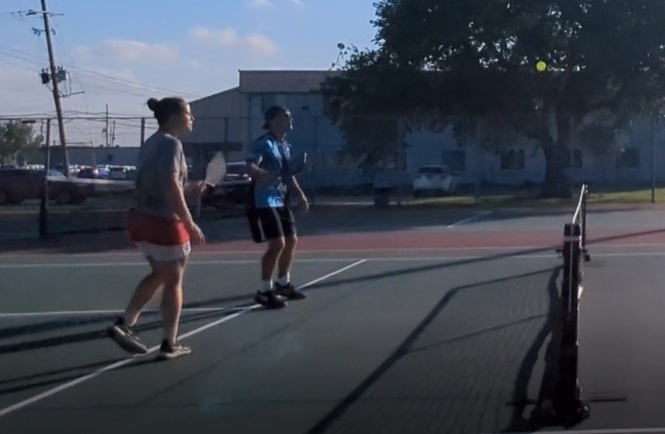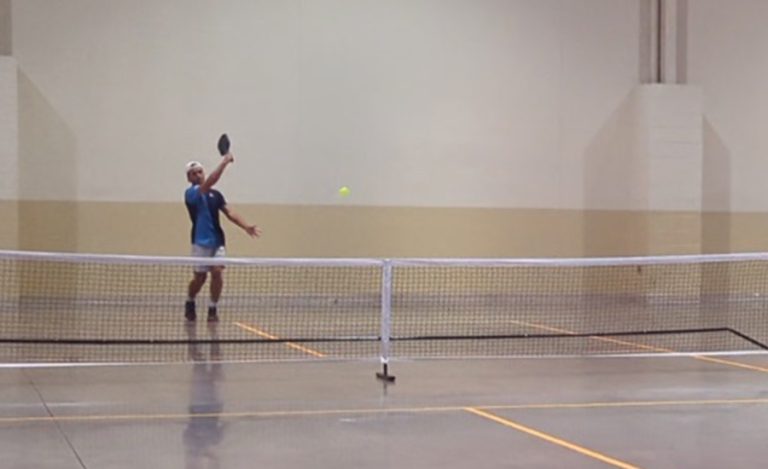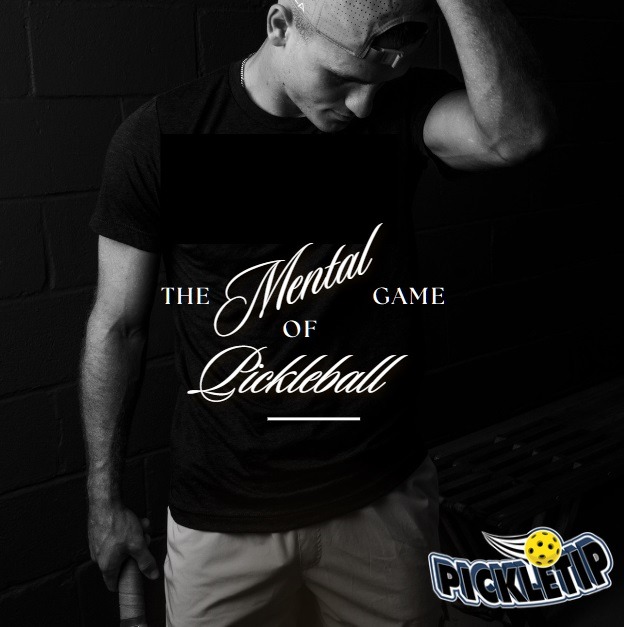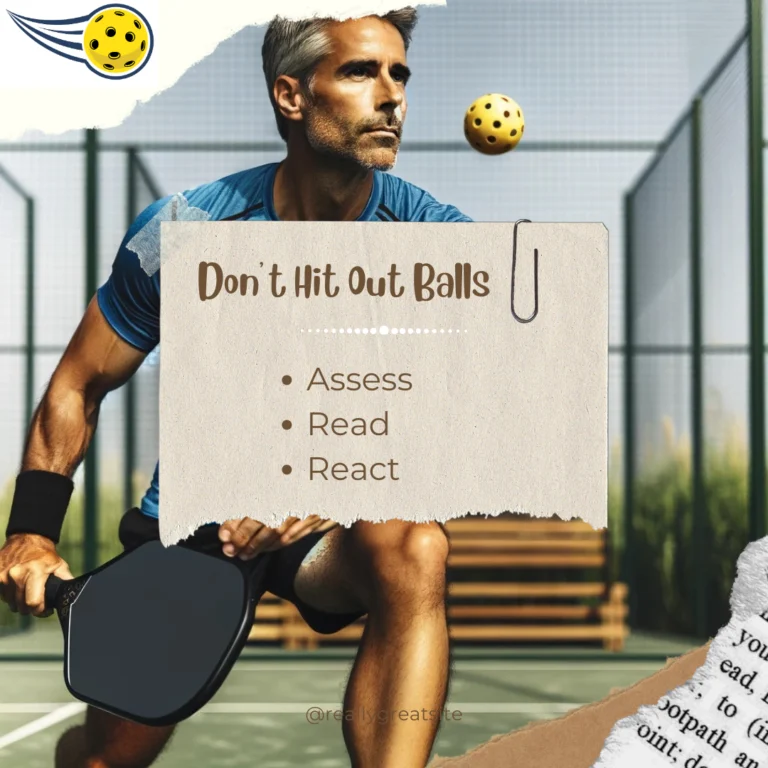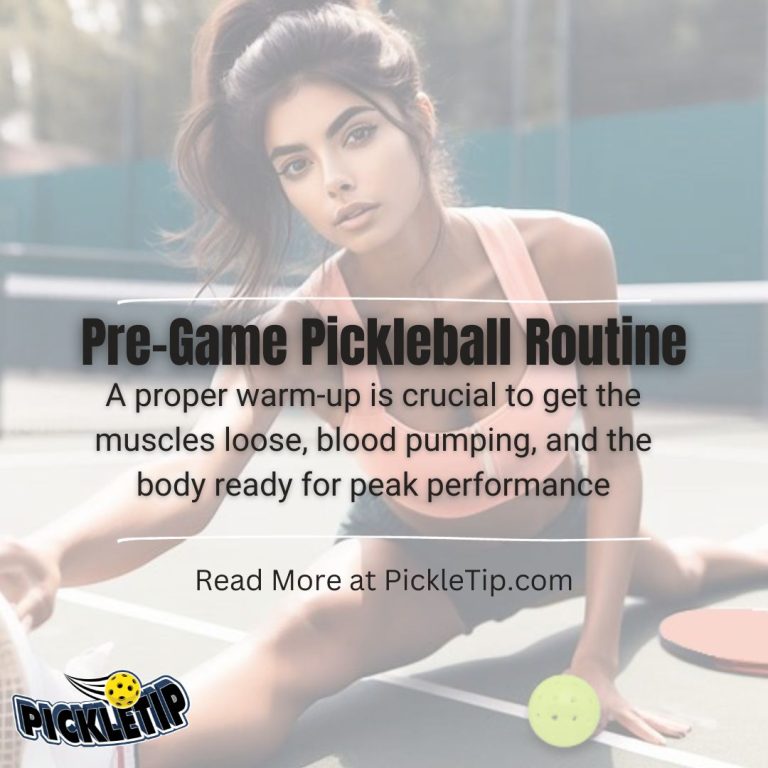10 Strategies To Improve Your Pickleball Defense
Whether you’re just starting out in the game or have been playing for years, defense is a critical part of pickleball. It can help you become a formidable opponent, take control of the game, and keep your competitors guessing. Here are 10 pickleball defense strategies that can help you step up your game and take your play to the next level.
1. Stay in Ready Position
One fundamental defensive strategy in pickleball is to always stay in a ready position. Being in the ready position allows you to react quickly and effectively to your opponent’s shots. It essentially keeps you one step ahead of the game.
Understand the Ready Position
First, let’s understand what the ready position in pickleball is. The ready position involves standing with your feet shoulder-width apart and knees slightly bent. Your weight should be evenly distributed on both feet, which will make it easier to move quickly in any direction. This stance is similar to a slight squat, engaging your lower body muscles and preparing them for action. Your upper body should lean slightly forward, as this helps in maintaining balance and allows for swift directional changes.
Hold the Paddle Correctly
The paddle should be held in both hands at about waist level and in front of your body. This paddle position allows for quick forehand or backhand responses. Make sure to keep your grip relaxed, as a too-tight grip can restrict your movement and reduce the power and accuracy of your shots. Your paddle should always be ‘up and ready’ — not down by your knees or behind you. Keeping the paddle up helps you react more quickly when the ball comes your way.
Keep Your Eyes on the Ball
Keep your eyes on the ball throughout the game. By tracking the ball from the moment it leaves your opponent’s paddle until it reaches yours, you’ll have more time to anticipate its trajectory and prepare your response. Additionally, it helps you predict the speed and spin of the ball, allowing for more effective shots.
Stay Light on Your Feet
Try to stay light on your feet while in the ready position. This agility will allow you to move more quickly towards the ball, increasing your chances of hitting a successful shot. To do this, you can keep your weight on the balls of your feet, which enables quicker reactions and movements.
Practice the Ready Position
Practice holding the ready position until it becomes second nature. You can do this during drills, practice games, or even at home. The idea is to make this stance your default position during the game. With time and practice, you’ll be able to effortlessly maintain the ready position throughout your games, improving your overall defense.
Staying in a ready position is paramount in pickleball defense. You should be standing with your feet shoulder-width apart, knees slightly bent, and weight evenly distributed on both feet. This allows for quick and nimble movement in any direction, enabling you to react swiftly to shots and reach the ball before your opponent. To maintain a ready position, keep your eyes on the ball and be prepared to move instantaneously.
2. Protect the Middle
The middle of the court is a common target in pickleball. Situated between the non-volley zone and the backline, protecting this area can significantly enhance your defensive game. Maintain a position near the center of the court, with your feet oriented towards the net. Stay alert about your opponent’s position and try to anticipate their shots, ensuring you’re in the right place at the right time.
Protecting the middle of the court is a crucial strategy in pickleball, particularly in doubles games. The middle of the court is often targeted by opponents because it’s the area between you and your partner, potentially creating confusion about who should take the shot. Let’s dive into more detail about how to effectively protect the middle.
Understand the Importance of the Middle
The middle of the court is a common target in pickleball for several reasons. First, shots directed to the middle can cause confusion between you and your partner, leading to missed shots. Second, hitting the ball down the middle reduces the angles that opponents can use for their return shots, making it more challenging for them to hit winners.
Position Yourself Correctly
To protect the middle, both you and your partner should position yourselves near the center of your half of the court. Remember to keep your feet pointing towards the net. This way, you’ll be able to quickly react to shots aimed at the middle. It also enables you to cover a shot to your side if needed.
Anticipate Your Opponent’s Shots
Be aware of where your opponent is positioned, and try to anticipate their shots. If you see that they’re setting up for a shot down the middle, be prepared to step in and take the shot. A quick reaction time is crucial in successfully protecting the middle.
Communication with Your Partner
Good communication with your partner is crucial for effectively protecting the middle. Before the game, discuss with your partner who will take shots in the middle. A common strategy is for the player with the forehand shot to take the middle, but it can depend on both players’ strengths. During the game, use clear and concise verbal cues to avoid confusion.
Practice Drills
Practice drills specifically designed to improve your skills at protecting the middle. These could include drills where a third player continuously hits shots down the middle while you and your partner work on effectively returning these shots. Over time, this will help improve your anticipation, reaction time, and communication with your partner.
3. Improve Your Center Coverage by Shifting Back
Enhancing center coverage involves shifting back from your ready position when your opponent is near the court’s center. This strategic move buys you more time to react to shots and lets you cover a greater portion of the court. By doing this, you can also avoid getting caught off guard by quick shots and reach the ball before your opponent. Remember to keep your eyes on the ball and stay prepared to move at any moment.
4. Work on Your Blocking
Blocking is a crucial defensive skill in pickleball, especially when facing powerful shots like slams or volleys. Good blocking allows you to return these high-velocity shots successfully and can turn a defensive situation into an offensive opportunity. Let’s delve into how to improve this critical aspect of your game.
Understand the Art of Blocking
Blocking in pickleball refers to the ability to stop or redirect high-speed shots from your opponent, typically when you’re close to the net. Instead of swinging at the ball, the player ‘blocks’ the ball, using the paddle more like a shield. The goal is to return the ball over the net and preferably keep it low, making it difficult for your opponent to continue their attack.
Hold Your Paddle Correctly
When blocking, it’s crucial to have a firm grip on your paddle but avoid squeezing it tightly. Your wrists should be steady to prevent the ball from popping up and giving your opponent an easy shot. The paddle face should be perpendicular to the ground, and you should aim to hit the center of the paddle to maximize control.
Stay in Ready Position
Just like with other defensive strategies, the ready position is key. Keep your knees slightly bent, your weight on the balls of your feet, and hold your paddle up at waist level. This position will give you the best chance to react quickly to a fast shot and execute a successful block.
Read Your Opponent’s Body Language
Paying close attention to your opponent’s body language can help you anticipate fast shots that require blocking. Look at their paddle position, their body alignment, and the way they’re setting up their shot. This can give you clues about the speed, direction, and type of shot they’re about to hit.
Adjust to the Ball’s Spin
Sometimes, opponents add spin to their power shots. If you can read the spin on the ball, you can adjust your paddle’s angle to block effectively. This ability comes with practice and keen observation skills during matches.
Drills to Improve Blocking
Improving your blocking skills will require consistent practice. You can work on drills where a partner hits fast shots towards you, and you focus solely on blocking. Remember, the goal isn’t to hit a winning shot but to successfully return the ball over the net and keep it low. With consistent practice, you’ll enhance your blocking skills, making you a formidable opponent during pickleball games.
5. Don’t Chase Bad Balls
A common error in pickleball is chasing bad balls – attempting to return shots that are too far or too difficult to reach. Instead, focus on repositioning yourself and preparing to return the next shot. This not only conserves energy but also reduces the chances of making costly mistakes.
One of the keys to a solid pickleball defense is understanding when not to play a ball, particularly if it’s a “bad” ball. These are balls that are unlikely to be returned successfully due to their height, speed, spin, or trajectory. By avoiding chasing bad balls, you’ll conserve energy, avoid risky shots, and keep yourself in a better position for the next shot. Let’s delve deeper into this strategy.
Understanding a “Bad” Ball
In pickleball, a “bad” ball can be defined in various ways. It could be a ball that’s hit too high and is likely to go out of bounds. A “bad” ball could also be a ball hit with extreme spin or speed, making it difficult to control your return. Another type of “bad” ball is one that’s hit too close to the net or the sidelines, making it almost impossible to return without faulting.
High Balls
High balls, particularly those well above your shoulder height, can be challenging to return effectively and could potentially put you in a vulnerable position for the opponent’s next shot. As a rule of thumb, if a ball is flying high and you estimate it will land out of bounds, let it go. Similarly, if a ball is hit so high that you’d need to reach up and hit it overhead (and you’re not comfortable with or skilled at overhead shots), consider letting it go.
Out of Reach Balls
It can be tempting to chase every ball, but balls hit too far to your side or too close to the net may lead to unsuccessful returns or put you out of position. If you find that you’re stretching to your limit, or even stepping out of the court to reach a ball, it’s often better to let it go.
Defending Against and Returning a Slice Shot in Pickleball
The slice shot in pickleball, due to the underspin, can make the ball bounce lower and skid, making it tricky to return. However, with proper technique and anticipation, you can effectively defend against and return a slice shot. Here’s how:
- 1. Recognize the Slice
The first step to defending against a slice shot is to recognize it. Watch your opponent’s paddle during the shot. If you see a high-to-low motion on the swing, be prepared for a slice shot that will skid and stay low after the bounce.
- 2. Anticipate the Bounce
Because of the underspin, a slice shot will not bounce as high as other shots. Expect a low bounce and be prepared to bend your knees and get low in order to effectively return the shot. If possible, try to take the ball before it bounces to negate the effects of the spin.
- 3. Neutralize with a Slice of Your Own
One of the effective ways to return a slice shot is to slice it back. This requires brushing underneath the ball in a downward to upward motion. This is a more advanced technique and requires practice, but it can effectively neutralize your opponent’s slice.
- 4. Use a Soft Shot
A slice shot often results in less pace on the ball. Instead of trying to hit the ball hard, opt for a soft shot, like a dink or a drop shot, to maintain control of the rally.
- 5. Reset the Point
If you’re pulled out of position by a slice shot, or if the slice is particularly well executed, consider hitting a defensive shot to reset the point. This could be a soft shot into the kitchen or a lob to buy yourself time to recover.
- 6. Practice Drills
Set up drills to practice handling slice shots. The more you face this shot, the better you’ll be able to anticipate and counter it in a game situation.
- 7. Stay Patient
Finally, be patient. Because of its lower bounce and slower speed, a slice can disrupt your rhythm. Stay calm, wait for the ball, and avoid rushing your return. A hurried shot can often lead to unforced errors.
Decision-Making Drills
To improve your decision-making on whether or not to chase a ball, you can practice specific drills. Have a partner or coach hit a variety of shots, mixing in high balls, spin shots, and balls near the boundaries. This will help you improve your judgement over time, aiding your decision-making process during competitive play.
Remember Your Positioning
Every time you decide to chase a bad ball, you’re potentially leaving your side of the court open for the next shot. Good positioning is key in pickleball, so always consider how chasing a bad ball will impact your court position and your ability to return the next shot.
6. Adjust Your Grip Pressure and Shot Speed
Modulating your grip pressure and shot speed can drastically improve your pickleball defense. Be aware of the pace and spin of the ball and adjust your grip to return the shot effectively. If the ball is slow and has high spin, loosen your grip for more spin on your return shot. If the ball is fast and has little spin, tighten your grip and hit the ball with more speed, giving you more control over your shots.
7. The Best Defense is a Good Offense
Effective offense plays a significant role in pickleball defense. Focusing on offensive shots puts your opponent on the defensive and creates opportunities for them to make mistakes. This strategy helps control the pace of the game, pressures your opponent, and opens more opportunities to score points.
8. Anticipate Your Opponent’s Shots
Anticipating your opponent’s shots is a critical aspect of pickleball defense. By observing their position, shot selection, body language, and footwork, you can place yourself optimally to return the shot. This skill not only prevents you from being caught off guard but also gives you more time to react.
9. Communicate with Your Partner
Effective communication with your partner is a crucial defensive strategy in pickleball. By coordinating your movements, you can ensure optimal positioning for shot returns. Clear and concise communication helps avoid confusion and ensures that both of you are on the same page during the game.
10. Focus on Your Footwork
Footwork is a critical component of your pickleball game, and adopting the right technique can significantly improve your speed, agility, and performance on the court. One technique that many players find effective is the “step and slide” or “step and drag” method. This guide will delve into this footwork technique, explain its benefits, and provide tips on how to practice it.
1. Understanding the Step and Slide Technique
The step and slide technique is a footwork method that involves moving your opposite foot first when responding to a shot. For instance, if the ball is hit to your left, you move your right foot first, and then slide your left foot. This approach can feel less intuitive initially, but many players find it effective once they get the hang of it.
2. Why Use the Step and Slide Technique?
The step and slide method is advantageous because it incorporates a slight body rotation into your movement, providing a wider range of motion and adding power to your shots. By moving the opposite foot first, your body naturally pivots, which not only helps maintain balance but also increases lateral movement speed.
3. Benefits of the Step and Slide Technique
- Improved Balance: The pivoting motion helps maintain your balance, enabling you to move faster without losing stability.
- Increased Shot Power: As your body naturally rotates, you engage more muscles in your swing, adding power to your shots.
- Enhanced Range of Motion: With the step and slide method, you cover a wider area on the court due to the increased rotation and lateral movement.
4. Practicing the Step and Slide Technique
Mastering the step and slide technique requires practice. Here are some tips to help you get started:
- Shadow Drills: Practice the footwork pattern without a ball. Visualize a shot being hit to your left and right, and practice moving your opposite foot first, followed by the slide.
- Lateral Movement Drills: Set up cones in a straight line and practice moving laterally using the step and slide technique. Make sure to lead with your opposite foot and follow with a smooth slide.
- Practice with a Partner: Have a partner feed you balls to your left and right while you practice the step and slide footwork. Start slowly and increase speed as you become more comfortable.
Remember, mastering any new technique takes time and patience. Don’t be discouraged if it feels awkward initially; with consistent practice, the step and slide method can become a natural part of your game, enhancing your performance on the pickleball court.
Frequently Asked Questions
What is the best grip for pickleball defense?
The best grip for pickleball defense is a comfortable one that offers good control over the paddle. The most popular grip is the “Eastern Forehand” grip, which allows for quick adjustments and effective shot returns.
How do I improve my pickleball footwork for better defense?
To enhance your footwork, focus on moving quickly and smoothly around the court. Practice agility and balance drills, and attempt to reach the ball as swiftly as possible. Over time, your footwork will improve, making you a formidable defender in pickleball.
What is the most important strategy for pickleball defense?
The key strategies for pickleball defense are maintaining a ready position, protecting the court’s middle, and having a strong offense. These strategies help you react quickly to shots, cover a larger area of the court, and put your opponent on the defensive.
How can I anticipate my opponent’s shots in pickleball?
Anticipate your opponent’s shots by observing their body language, footwork, and shot selection. Guessing their next move based on their position and past shots can help you react more effectively and quickly.
How can I communicate effectively with my pickleball partner on defense?
Clear and concise communication is the key to effective teamwork in pickleball. Regularly check in with your partner to ensure that you’re both on the same page, helping you coordinate movements and form an effective defensive team.

